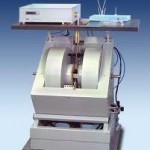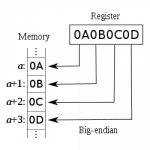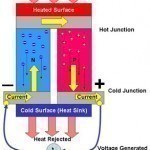Deoxyribonucleic acid (DNA) is a nucleic acid found in the cells of all living organisms. It houses the vital genetic directives involved in the growth and functioning of all living organisms; as a result of such behavior, it is considered to be the building block or blueprint of life. DNA is also instrumental in the building of other vital components such as proteins and RNA molecules. DNA was first classified by the physician Friedrich Miescher in 1869. Several researchers such as Phoebus Levene, William Astbury, and Frederick Griffith further contributed Read More
What Causes Radioactivity?
Radioactivity is caused when an atom, for whatever reason, wants to give away some of its energy. It does this because it wants to shift from an unstable configuration to a more stable configuration. The energy that is released when the atom makes this shift is known as radioactivity. In other words, radioactivity is the act in which an atom releases radiation suddenly and spontaneously. What are the Types of Radioactivity? There are four specific types of radioactivity. In three of the four instances, there is some sort of a Read More
How Safes Are Made
Known under the generic name of safe or safe box there is a very broad set of constructions. From simple home safes used to keep personal documents, to bank safes which include special building construction and security measures. All safes are sturdy constructions made of metal (most with different layers) and a removable part (or door) secured by a lock. Safes are designed to resist heat, concussion, and other forms of physical attack. The scientific advances in the area of metallurgic and materials come hand to hand with the construction Read More
Artificial Muscles
Artificial muscles are one of the most important applications of flexible electronic structure technology. Artificial muscles are designed to serve as an electronic device capable of accommodating printed circuits yet, at the same time, capable of moving with human muscles. Aside from their obvious uses, artificial muscles may also be used as sensors for the evaluation and monitoring of muscle and tissue activities and conditions. Studies and developments on the flexible electronics technology are being made and undertaken by researchers from the University of Illinois together with the researchers at Read More
Stretchene
Stretchene is the name of a special kind of high-performance resin that falls under the polypropylene family of materials. Although it is considered as polypropylene, stretchene has better characteristics which make it a standout among all polypropylene materials. Conventional polypropylene or PP (also polypropene) is a thermoplastic material mainly used for the packaging industry because it is resistant to many chemicals. The most common use of polypropylene is in food packaging. Stretchene, however, has more desirable properties than conventional polypropylene. Thus, it is fit for even more applications such as Read More
ESR Spectroscopy

ESR Spectroscopy (Electron Spin Resonance Spectroscopy or Electron Paramagnetic Resonance Spectroscopy) is a technique used for studying chemical species that have one or more “free radical” or unpaired electrons. Most stable molecules only have paired electrons without any free radicals, so ESR Spectroscopy is used less often than NMR (Nuclear Magnetic Resonance) Spectroscopy, the usual technique for studying chemical bonds. This also means that ESR Spectroscopy is a highly specific technique. How does ESR Spectroscopy Work? A constant photonic frequency, such as microwave radiation, is used in conjunction with an Read More
Hoverboards
Hoverboards in movies are fictional, but there are actual hoverboards — though they are not the size of a skateboard. Hoverboards are simple contraptions that allow the user to travel without parts that would roll over the ground. Hoverboards are an offshoot of the hovercraft. The hovercraft (also known as air-cushion vehicle or ACV) is a vehicle that has been configured to allow travel over land and water. The mechanism of a hovercraft (and the hoverboard, too) is pretty simple. One uses engines to pump air beneath a vehicle. This Read More
What is a Big Endian?

The term “big endian” describes the order in which a sequence of bytes is stored in computer memory. In the big endian storage sequence, the most significant value in the sequence, or the “Big” end, is stored at the lowest storage address (ie the first position). The alternative method of memory storage is referred to as little endian, where the least significant value in the sequence is stored first. For example, if the hexadecimal number 4E51 was stored in big endian format it would be saved as the value 4E51. Read More
Methyl Methacrylate
Methyl methacrylate has been used in plastic and resin manufacture for a number of years. It has been found to be significantly irritating to human eyes, skin, and mucous membranes. Exposure to methyl methacrylate has both short and long term effects and includes symptoms such as coughing, wheezing, chest tightness, and some neurological symptoms. The U.S. EPA does not consider the substance to be carcinogenic to humans. What is Methyl Methacrylate Used For? Methyl Methacrylate is primarily used in the production of plastics, resins, and plexiglass. These are then used Read More
Seebeck Effect

The Seebeck Effect was first discovered in 1821. It describes the thermoelectric phenomenon that results when the temperature differences between dissimilar metals in a circuit are converted into electric current. This is one of three similar processes that relate to conductivity, temperature, and thermoelectricity that was discovered in the 1800s. The Thomson Effect was first written about in 1851 following the Peltier Effect explanation in 1834. Who Invented the Seebeck Effect? The effect is named after East Prussian scientist Thomas Johann Seebeck, who lived from 1770 to 1831. He first Read More


Share on: